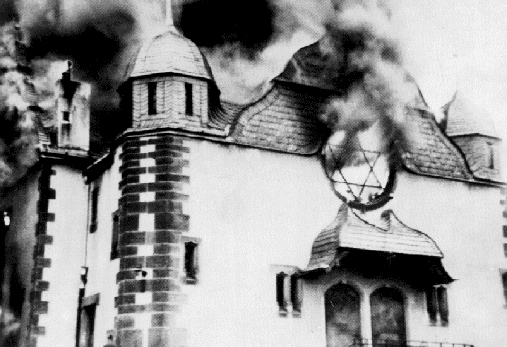Kristallnacht
Historian article

Why Reichskristallnacht?
In The Third Reich Michael Burleigh writes: ‘We should be cautious in seeing spontaneity where frequency suggests instigation from a central source.' He comments on ‘a dialectic between "spontaneous" grassroot actions and "followup" state sponsored measures.' These remarks relate to 1935, the time of the Nuremberg Laws [the Citizenship Law and the Law for Protection of German Blood and Honour], but could apply equally to the events known as the Night of Broken Glass.
Following the 1937 Nuremberg Rally, at which Hitler attacked ‘Jewish Bolshevism', came a new wave of antisemitic violence. The mounting economic problems facing the Four Year Plan then led to expropriation of Jewish businesses. The annexation of Austria and the Sudetenland boosted further violence towards the Jews and their property in the summer of 1938, surpassing that of 1935.
The immediate background to Krystallnacht was the murder in Paris of Ernst vom Rath, a Legation Secretary there. This aristocrat, a lukewarm Nazi, was shot by 17 year old Herschel Grynzpan. He had originally intended to kill the ambassador in protest at the expulsion from Germany of his parents and two sisters. 17,000 Poles of the 50,000 Jews Poland had rendered stateless were stuck in camps in the no-mans-land between Germany and Poland. So long-term issues include antisemitism in both these countries.
Contributing too to the situation was the Anschluss which brought 195,000 Jews and their virulently antisemitic fellow Austrians into the Reich, and the Munich Agreement, which, granting Sudetenland to Germany, reduced Hitler's concern for international opinion. The assassination attempt of 7 November 1938 led to cries of `Revenge for Paris' during the pogroms of 9-10 November.
The summer of 1938 had already witnessed...
This resource is FREE for Student HA Members.
Non HA Members can get instant access for £2.75

